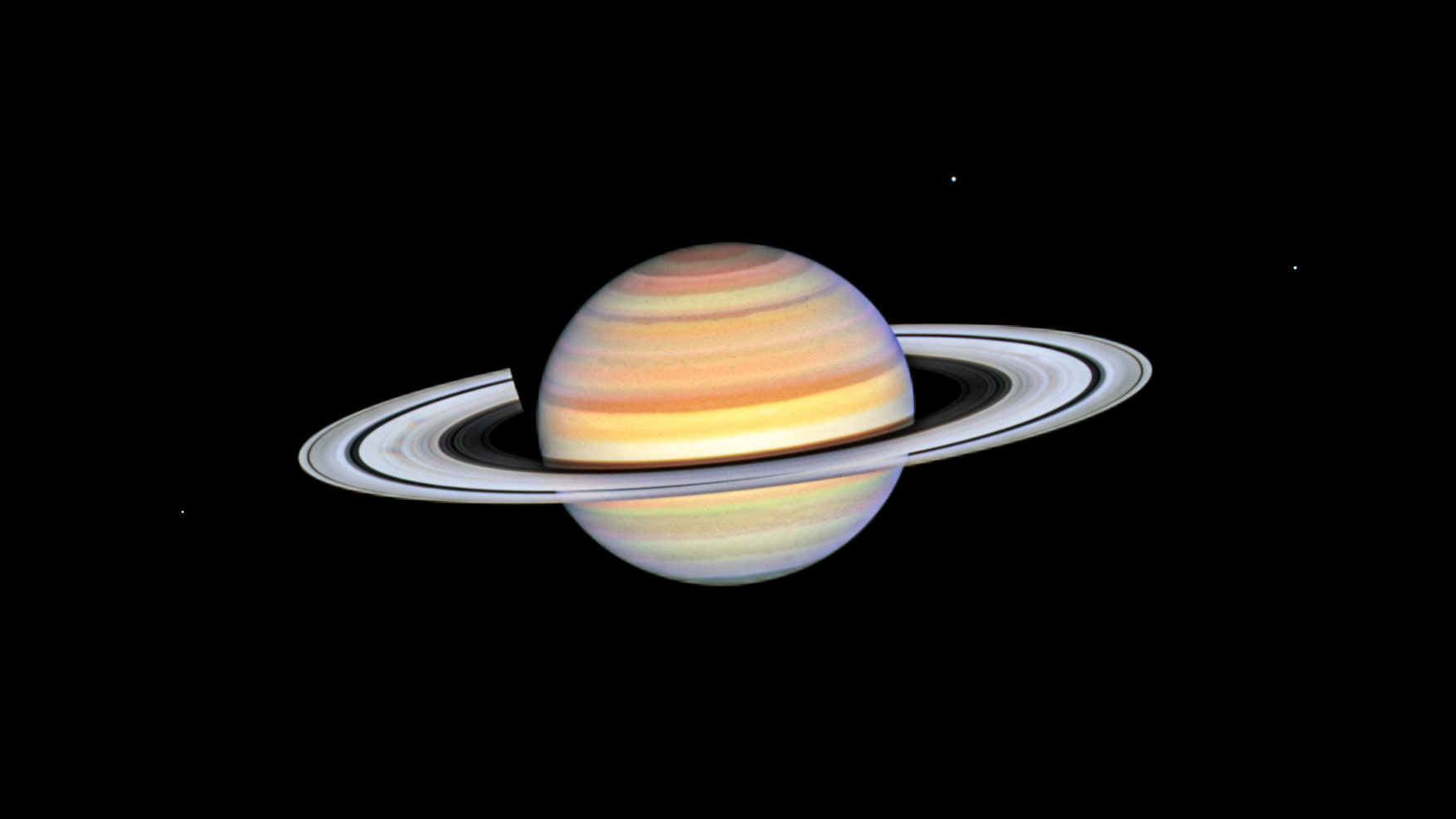4 min read
The most recent spacecraft tracking and telemetry data in this reporting period were acquired on Feb. 14 from the Deep Space Network 34 meter Station 55 in Madrid, Spain. The Cassini spacecraft is in an excellent state of health. All subsystems are operating normally except for the issues being worked with the Cassini Plasma Spectrometer and the Ultrastable Oscillator. Information on the present position of the Cassini spacecraft may be found on the "Present Position" page at: http://saturn.jpl.nasa.gov/mission/presentposition/.
This week the Cassini science instruments made several observations called TEAs - Titan Exploration from Apoapsis. This campaign makes frequent distant observations over periods of days to weeks under illumination at low to moderate phase angles. Rain clouds are infrequent on Titan, so TEA observations provide a good chance to document coincident atmospheric and surface changes. The Imaging Science Subsystem (ISS), the Composite Infrared Spectrometer (CIRS), and the Visual and Infrared Mapping Spectrometer (VIMS) participate in TEAs.
The ISS team performed another observation in its Satellite Orbit Campaign, observing several small inner moons, and the VIMS team conducted several observations in the Saturn Storm Watch series and the Titan Monitoring Campaign.
Wednesday, Feb. 8 (DOY 039)
The Attitude and Articulation Control Subsystem team performed a calibration of the prime Inertial Reference Unit, which required rotating Cassini about its X, Y, and Z axes. Gyro calibrations such as this are done about once per year as a system performance check.
The Magnetometer (MAG) performed a calibration while the spacecraft was rolling about its Z axis and keeping Cassini's High-Gain Antenna pointed on Earth for communications.
The Ultraviolet Imaging Spectrograph (UVIS) conducted an interplanetary hydrogen survey from out near apoapsis in Saturn orbit.
Thursday, Feb. 9 (DOY 040)
Today Cassini passed through apoapsis at 5,276 kilometers per hour with respect to Saturn, at an altitude of 2.9 million kilometers. This marks the start of Saturn Orbit #161, which has a period of 23.5 days and near-equatorial inclination.
The Cosmic Dust Analyzer (CDA) took advantage of Cassini's distance from Saturn to undertake several long-duration observations of the interstellar dust passing through the solar system.
The Attitude and Articulation Control Subsystem executed a reaction wheel Y-bias maneuver to adjust wheel speeds, while Cassini was off Earth point.
The Cassini Spacecraft Operations Office met with JPL Division 33 (Communications, Tracking & RADAR) personnel today to discuss further troubleshooting on Cassini's anomalous Ultrastable Oscillator (USO). A review will be held soon to propose a test designed to check out the USO using Deep Space Transponder-B (DST-B) on the spacecraft without turning off DST-A, which is prime.
Friday, Feb. 10 (DOY 041)
Orbit trim maneuver #309 was planned for today, but it was deemed unnecessary and cancelled. The Navigation team's orbit determination solution estimated Cassini to be only about 3 kilometers from its aimpoint for the upcoming Titan T-82 flyby and 0.5 seconds off in timing without the maneuver.
MAG performed an 8-hour calibration while rotating the spacecraft about its X-axis.
Sunday, Feb. 12 (DOY 043)
The Deep Space Network conducted seven 9-hour tracking sessions with Cassini during the week without any losses of Telemetry, Tracking (Doppler and Ranging), Command or Radio Science data.
Monday, Feb. 13 (DOY 044)
The Navigation team took five images of Enceladus against the background stars for purposes of Optical Navigation.
Simulation coordination and procedure review meetings were held this week to discuss RADAR tests for the upcoming Titan T-83 and T-84 flybys in the S73 command sequence which is currently in development. In the Cassini Integration and Test Lab, command testing was conducted for both activities, and the test report for T-83 was released today. An Encounter Strategy Meeting for the Titan T-82 through Enceladus E-17 encounters also took place today.
Tuesday, Feb. 14 (DOY 045)
Today, visitors to the Cassini website http://saturn.jpl.nasa.gov/ were greeted with a fine bouquet of red roses. The artwork was later archived here: /resources/15463.
A mission planning forum was held to review propellant usage during the S71 sequence, and the status of the propellant budgets. A "consumables" status is provided on a regular basis so the Project can remain informed of propellant usage and end-of-mission margins.
In anticipation of the Titan T-82 encounter coming up Sunday, a flyby web page was set up. As usual, related images and news will be posted to it. View the page here: http://saturn.jpl.nasa.gov/mission/flybys/titan20120219/.







